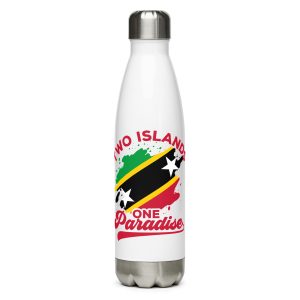Timeline of Key Events in St. Kitts and Nevis
St. Kitts and Nevis, a twin-island nation in the Eastern Caribbean, boasts a rich and intricate history shaped by indigenous cultures, European colonization, the transatlantic slave trade, and the determined pursuit of independence. This timeline offers a comprehensive overview of the significant events that have molded the islands from pre-Columbian times to their modern-day status as an independent nation.
Pre-Columbian Era (circa 3000 BCE – 1493 CE)
3000 BCE: Early Indigenous Settlement
The islands of St. Kitts and Nevis first welcomed settlers, believed to be the Ciboney people. These early inhabitants relied on fishing, hunting, and basic agriculture to sustain their communities.
500 CE: Arrival of the Arawaks
The Arawaks, or Taino people, migrated to the islands, bringing with them advanced knowledge in pottery, agriculture, and community organization. They established settlements across St. Kitts and Nevis.
800 CE: Kalinago (Caribs) Arrival
The Kalinago people, known for their seafaring prowess and warrior culture, arrived on the islands, eventually displacing the Arawaks and establishing dominance in the region by the time Europeans made contact.
European Exploration and Colonization (1493 – 1700s)
1493: Christopher Columbus’s Second Voyage
Christopher Columbus sighted St. Kitts during his second voyage to the New World, naming it Saint Christopher after the patron saint of travelers. This marked the beginning of European interest in the Caribbean.
1623: First Permanent European Settlement
Englishman Sir Thomas Warner established the first permanent European settlement on St. Kitts, marking the start of English colonization in the Caribbean.
1625: French Settlement on St. Kitts
French settlers, led by Pierre Belain d’Esnambuc, established a colony on St. Kitts, sharing the island with the English. This division set the stage for future conflicts between the two powers.
1626: Kalinago Massacre (The Kalinago Genocide)
In a devastating attack, English and French settlers massacred the indigenous Kalinago population, seizing full control of the island and ending significant indigenous resistance on St. Kitts.
1628: English Settlement of Nevis
The English expanded their colonial presence by establishing a settlement on Nevis. Like St. Kitts, Nevis became a crucial center for sugar production and European colonization.
The Sugar Industry and the Transatlantic Slave Trade (1700s – 1800s)
1650s: Expansion of Sugar Plantations
Sugar cane cultivation became the dominant economic activity on both islands, leading to the establishment of large plantations and the importation of enslaved Africans as labor.
1671: Formation of the Leeward Islands Colony
St. Kitts and Nevis were organized into the British Leeward Islands colony, a structure that provided administrative oversight for over two centuries.
1706: Nevis Raid
During the War of Spanish Succession, the French raided Nevis, causing widespread destruction that significantly impacted the island’s economy and infrastructure.
1783: Treaty of Paris
The Treaty of Paris ended the American Revolutionary War and confirmed British control over St. Kitts and Nevis, solidifying their importance as key colonies in the British Caribbean.
Abolition and Emancipation (1807 – 1838)
1807: Abolition of the Slave Trade
The British Parliament passed the Abolition of the Slave Trade Act, ending the transatlantic slave trade to British colonies, including St. Kitts and Nevis. However, slavery itself continued on the islands.
1834: Emancipation of Slaves
Slavery was officially abolished in St. Kitts and Nevis, granting freedom to thousands of enslaved Africans. The British government introduced the Apprenticeship System, requiring former slaves to work for their former masters for a transitional period.
1838: End of the Apprenticeship System
The Apprenticeship System was abolished, leading to full emancipation. This marked a turning point in the social and economic history of the islands, as former slaves began seeking new opportunities.
Early 20th Century: Rise of Political Consciousness (1900 – 1950s)
1932: Founding of the St. Kitts Workers’ League
The St. Kitts Workers’ League, later becoming the St. Kitts-Nevis-Anguilla Labour Party, was founded to advocate for workers’ rights and greater political representation, playing a central role in the islands’ social and political reforms.
1952: Introduction of Universal Adult Suffrage
Universal adult suffrage was introduced, allowing all adults the right to vote, regardless of property ownership or income, marking a significant step towards greater democracy.
Towards Independence (1950s – 1983)
1967: Associated Statehood with the United Kingdom
St. Kitts, Nevis, and Anguilla became an associated state of the United Kingdom, gaining full internal self-government. However, tensions led to Anguilla’s secession in 1969.
1978: Death of Sir Robert Llewellyn Bradshaw
Sir Robert Bradshaw, the first Premier of St. Kitts and Nevis and a pivotal figure in the independence movement, passed away, leaving a legacy as a national hero.
1983: Independence of St. Kitts and Nevis
On September 19, 1983, St. Kitts and Nevis achieved full independence from the United Kingdom, with Dr. Sir Kennedy Alphonse Simmonds becoming the first Prime Minister of the independent federation.
Modern Developments (1983 – Present)
1998: Nevis Secession Referendum
Nevis held a referendum to determine whether it should secede from the federation. Although the proposal did not achieve the required two-thirds majority, the issue of autonomy remains a topic of discussion.
2005: Hurricane Wilma and Recovery
Hurricane Wilma caused significant damage to the islands, highlighting their resilience and the importance of disaster preparedness in the Caribbean.
2015: Formation of Team Unity Government
The Team Unity government came to power, marking a new era in the political landscape of St. Kitts and Nevis, with a focus on unity, economic growth, and social development.
This timeline captures the key events in the history of St. Kitts and Nevis, illustrating the resilience and determination of its people. From early indigenous settlements through European colonization, the brutal era of slavery, and the eventual triumph of independence, St. Kitts and Nevis has forged a unique identity. Understanding this history is crucial to appreciating the nation’s rich cultural heritage and its place in the Caribbean and the world. Today, St. Kitts and Nevis stands as a proud and sovereign nation, committed to building a prosperous future for all its citizens.
Educational Resources
- Historical Documents
- Language & Dialects
- Quizzes & Activities
- Teacher Resources
Disclaimer
The information provided on stkittsnevisflag.com is for general informational purposes only. While we strive to provide accurate and up-to-date information, we make no warranties or representations of any kind, express or implied, about the completeness, accuracy, reliability, suitability, or availability of the information contained on this website. Any reliance you place on such information is therefore strictly at your own risk.
stkittsnevisflag.com will not be liable for any loss or damage, including without limitation, indirect or consequential loss or damage, or any loss or damage whatsoever arising from loss of data or profits arising out of, or in connection with, the use of this website.
We encourage all users to verify any information found on this site before relying on it. If you find any incorrect or outdated information, please contact us at info@stkittsflag.com so we can make the necessary corrections.




